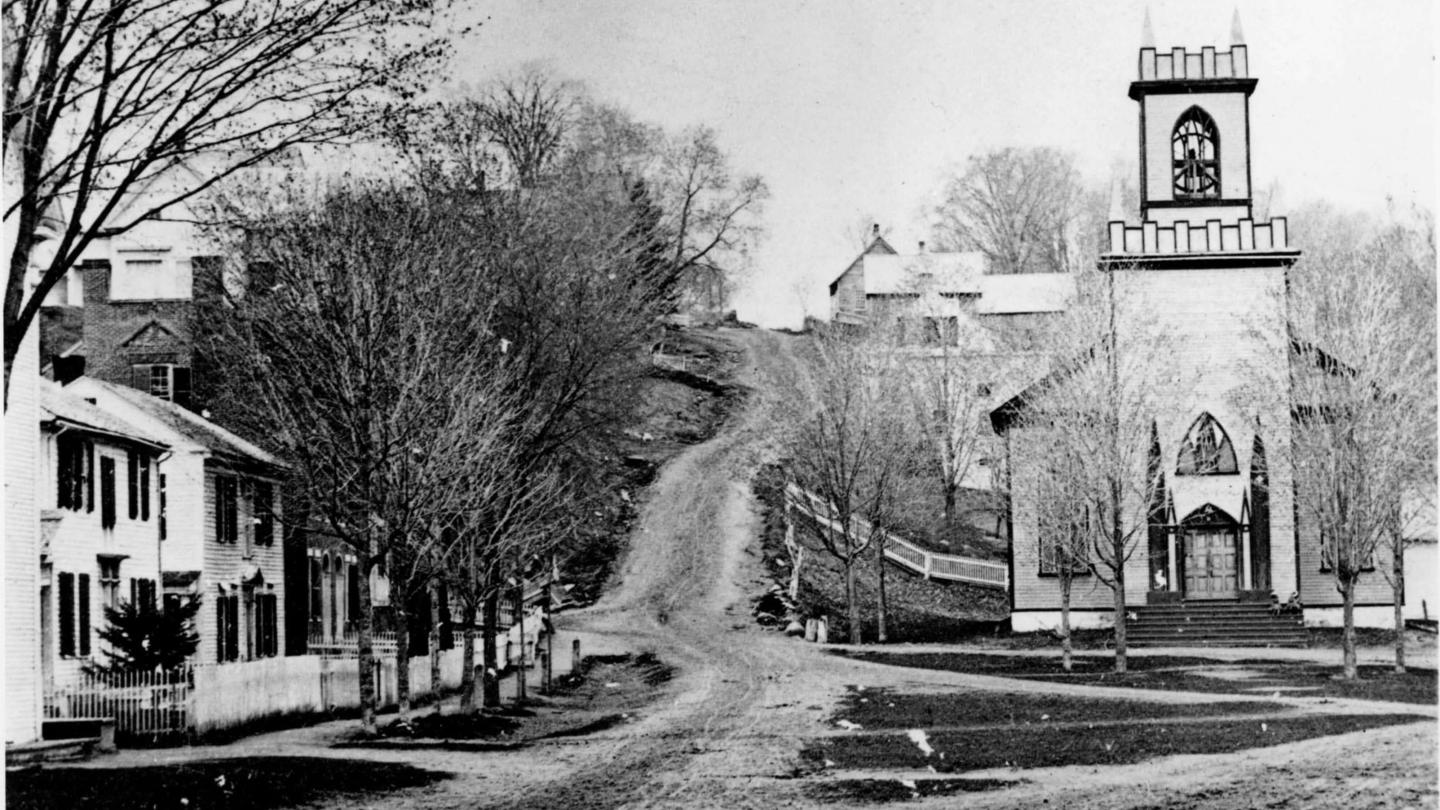First settled in 1768 but not incorporated till 1837, the village was designed with its natural landmarks in mind: the stretch of brick and wood storefronts settled in the valley between Mount Tom and Mount Peg, the village green at its heart within the fertile contours of the Ottauquechee River and the Kedron Brook.


Thanks in no small part to that fertile soil, Woodstock became the seat of a flourishing country trade nearly two centuries ago.
The agricultural productions are large and valuable: they consist of beef, pork, butter, cheese, apples, cider and wool, of which 9,000 fleeces were shorn in 1837
Several decades later, Billings Farm got its start. Previously owned and farmed by the family of America's first environmentalist, George Perkins Marsh, the farm expanded to more than 1,000 acres under the Billings name. And while the acreage has reduced to over 200 today, the outbuildings (see images below), the historic 1890 farmhouse, and many of the practices remain the same on this working farm and museum.




Just across the street, the Marsh-Billings-Rockefeller National Historical Park offers another expertly preserved piece of Woodstock's past.
Located on what was once a major gateway to Woodstock via the Woodstock-Royalton Turnpike, this 550-acre forested plot hosts George Perkins Marsh's boyhood home, which later became the property of Frederick and Julia Billings, followed by Mary French Rockefeller and her husband Laurance Spelman Rockefeller, all for whom the park is named.
A comparison between the image on the right—taken from the edge of the grounds looking toward Elm Street around the time the property was purchased by Billings—and today's is difficult. A copse of trees now stands where a carriage road once passed.

Further down Elm Street in the 1870s as pictured above, one might find glimmers of the present day at the confluence of Central Street. The Fairbanks Block (now known as French's Block, home of Dr Coburn's Tonic) was then freshly built in place of the wooden Village Hotel (1796) and still stands today—but the wide, grassy lawn, dirt road, and the nearly-bare summit of Mount Peg belie the years between then and now.
Not pictured is the Mackenzie Fountain, which was installed in the village square approximately two decades later. It served as a meeting-place for auctions, rallies, and traffic management until its removal in 1923.

This high-visibility location was also a popular parade route, with marching bands, the Glidden Tours, horse races, and even baseball teams (like the Old Reliables, local team pictured here on their way to the Windsor County Fair Grounds in 1892) drawing eager crowds to the sidewalks.



The modification of the village's downtown structures and facades paled in comparison to the transformations seen within the shops themselves.
While FH Gillingham's has been a mainstay of Elm Street since 1886, other village pillars like The Yankee Bookshop, established in 1925, have called various downtown storefronts home. And 1916, a visit to EK Wright's Pharmacy—meant you'd pass by penny candy and the counter of a soda fountain that almost demanded you take a seat!
Many others have come and gone in Woodstock's history, including Houghton's Red & White, which opened its doors on Whitcomb's Block in the 1960s before the Yankee Bookshop took its place.
Even Woodstock's green spaces have not been averse to change.
Thanks to the efforts of Frederick Billings, the hillsides of Mount Tom that were nearly bare of trees in 1869 due to massive deforestation are now dense with Eastern white pine, Scotch pine, Red pine, European larch, and Norway spruce.
The village green (previously known as the park), on the other hand, is awash in sunlight today due to Dutch Elm Disease which likely claimed the towering trees that had encircled the area—which once included a bandstand and seasonal ice skating rink—in foliage.




One of Woodstock's most photographed landmarks, the Middle Covered Bridge, was not the village's only covered bridge, and in fact is new by Woodstock standards!


A whopping seven unique bridges spanned the current site of the Middle Covered Bridge according to research by the Woodstock History Center.
The sixth was a modern iron bridge pictured here during a celebration possibly welcoming electricity to the village circa 1910. It was replaced in 1969 with the peg-framed structure you know and love today.
Woodstock Town Hall and the home of Pentangle Arts, which predates the Middle Covered Bridge by nearly 70 years, was constructed during the building boom of the 1890s and completed in 1900 as the town's opera house. Although Rutland architect Arthure H. Smith had initially erected "a plain, substantial building of modern appearance," after a devastating fire in 1927, the structure was restored in the Classic Revival style complete with portico.
Fun fact from the Woodstock History Center: The Opera House officially opened October 12, 1900 with a production of Denman Thompson’s “The Sunshine of Paradise Alley” on the stage in the new second floor auditorium.


We're nearing the end of this history lesson, but don't think we forgot about Woodstock village's other covered bridge!


The Marble Bridge, photographed above, and the Chrysler Garage shown to the right, were constructed nearly a century apart but demolished within four years of each other in the 1940s to make way for modern conveniences.
Like so many other gems of Woodstock's past, the low, sturdy stone structure of the Little Theater, which remains in that location near the Rec Center on the west side of Woodstock, outlasted them all.



About The Woodstock History Center:
Sharing the story of Woodstock through exhibits, lectures, workshops, outreach, publications, and programs for adults, families, and children.


